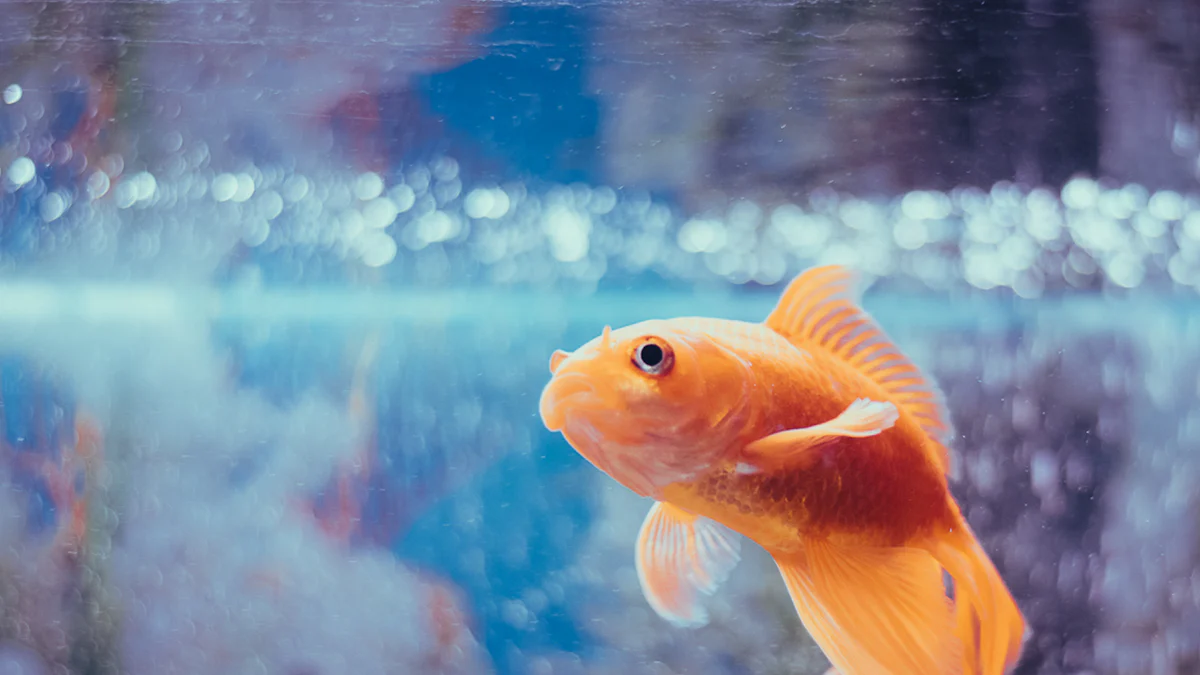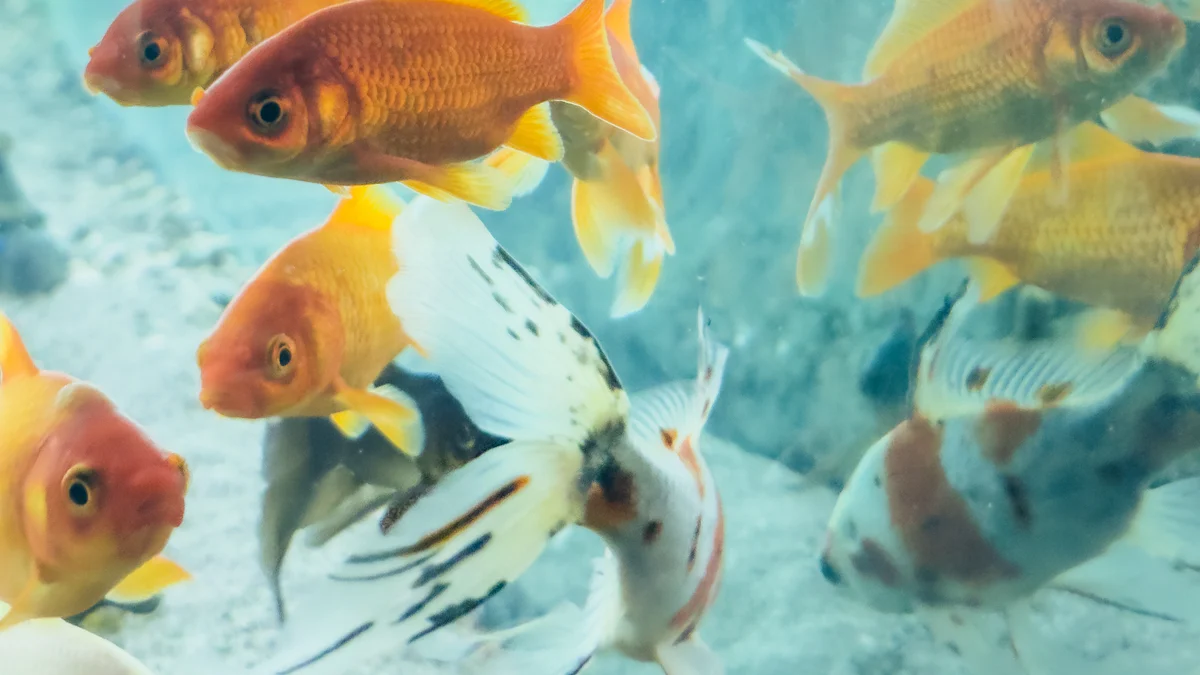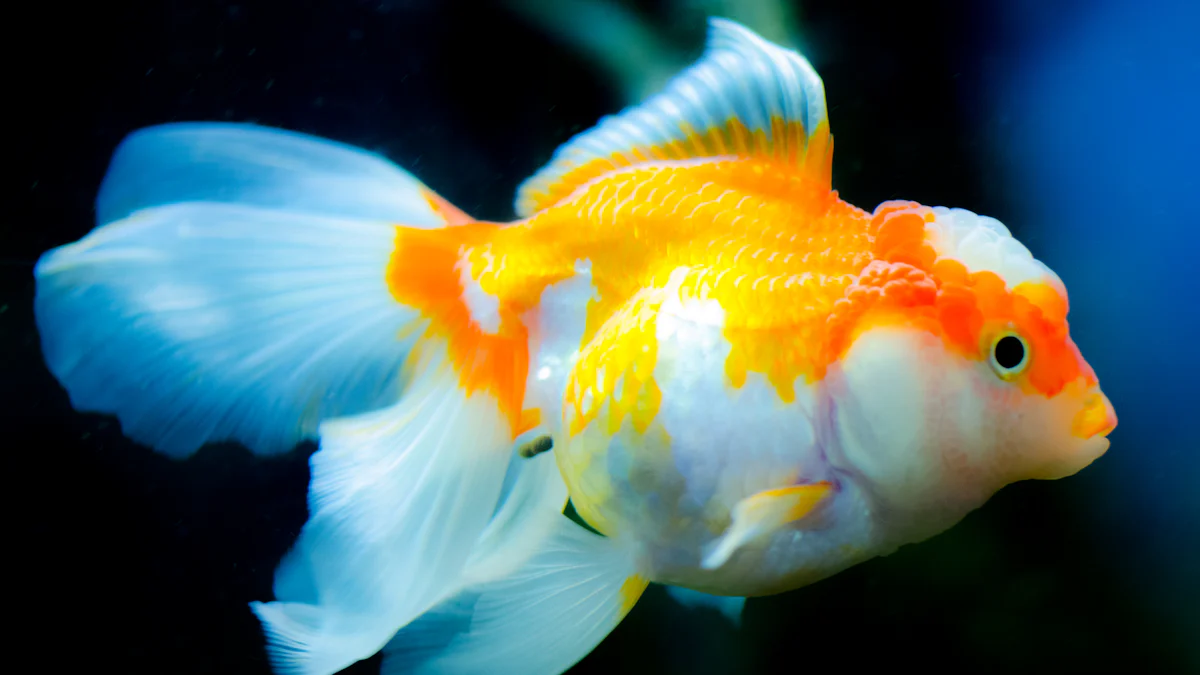
Goldfish adore mealworms, leading many to wonder, “can goldfish eat mealworms?” The answer is yes, as these tasty treats make a delightful addition to their diet. As omnivores, goldfish thrive on a mix of plant and insect-based foods. Mealworms, packed with protein, lipids, and essential nutrients, provide a nutritious boost that supports their growth and vibrant colors. If you’ve ever watched goldfish in outdoor ponds, you might notice them eagerly snapping up insects that land on the water. However, feeding mealworms requires care. Overfeeding can upset their digestion, so moderation is key. Proper preparation ensures your goldfish enjoy this tasty treat safely.
Key Takeaways
- Goldfish can safely eat mealworms as a nutritious treat, but moderation is essential to prevent digestive issues.
- Mealworms are rich in protein and essential nutrients, supporting growth and vibrant colors in goldfish.
- Both live and dried mealworms can be fed to goldfish, but each has its own benefits and drawbacks; choose based on your preferences and your fish’s needs.
- Always prepare mealworms properly by rinsing them and cutting them into smaller pieces to ensure safe consumption.
- Feed mealworms only once or twice a week, and observe your goldfish to adjust portion sizes as needed.
- Remove any uneaten mealworms promptly to maintain a clean and healthy aquarium environment.
- Incorporate a variety of foods into your goldfish’s diet to ensure balanced nutrition and overall health.
Nutritional Benefits of Mealworms for Goldfish

Mealworms pack a powerful punch when it comes to nutrition. These tiny insects are more than just a snack; they’re a treasure trove of essential nutrients that can benefit your goldfish in many ways. Let’s dive into the specifics and see why mealworms deserve a spot in your goldfish’s diet.
High Protein Content
Protein is the building block of life, and mealworms are bursting with it. For your goldfish, protein plays a crucial role in growth, muscle development, and overall health. Mealworms contain high-quality protein that rivals traditional fishmeal, making them an excellent supplement to your goldfish’s diet.
In fact, studies have shown that mealworms are rich in amino acids, which are essential for tissue repair and maintaining vibrant colors in fish. Feeding your goldfish mealworms occasionally can help them grow stronger and look more radiant. However, remember to balance their diet with other food sources to avoid overloading them with protein.
Other Nutritional Components
Mealworms aren’t just about protein. They also bring a variety of other nutrients to the table. These insects are rich in lipids, which provide energy and support healthy cell function. The fatty acids in mealworms can enhance your goldfish’s energy levels, keeping them active and lively.
Additionally, mealworms contain vitamins and minerals that contribute to your goldfish’s overall well-being. Vitamins like B12 and minerals such as iron and zinc play a role in boosting immunity and supporting metabolic processes. By adding mealworms to their diet, you’re giving your goldfish a nutritional boost that mimics the benefits of their natural diet in the wild.
However, moderation is key. Overfeeding mealworms can lead to digestive issues or even obesity in goldfish. Stick to small portions and rotate mealworms with other foods like algae or pellets to ensure a balanced diet.
Can Goldfish Eat Live or Dried Mealworms?
Mealworms come in two forms: live and dried. Both options can be a tasty treat for your goldfish, but each has its own set of benefits and drawbacks. Let’s explore what makes live and dried mealworms unique, so you can decide which is best for your aquatic friends.
Benefits and Drawbacks of Live Mealworms
Live mealworms bring excitement to your goldfish’s feeding routine. Watching your fish dart around to catch these wriggling snacks can be entertaining for both you and your goldfish. The movement of live mealworms mimics the natural prey goldfish would encounter in the wild, stimulating their hunting instincts. Plus, live mealworms contain moisture, which helps keep your goldfish hydrated.
However, live mealworms come with challenges. Keeping them alive requires effort. You’ll need to store them properly, feed them, and ensure they don’t escape. There’s also a risk of introducing parasites or bacteria into your tank, which could harm your goldfish. If you choose live mealworms, always source them from a trusted supplier and rinse them thoroughly before feeding.
Another drawback is their potential impact on your goldfish’s health if overfed. Ranchus, a type of goldfish, have shown negative effects like reduced protein intake and changes in appearance when fed live mealworms excessively. Moderation is key to avoiding these issues.
Benefits and Drawbacks of Dried Mealworms
Dried mealworms offer convenience and safety. Unlike live mealworms, they don’t require special care or storage. You can simply keep them in a sealed container and use them as needed. Freeze-drying eliminates parasites and bacteria, making dried mealworms a safer option for your goldfish. They’re also packed with protein and essential nutrients, providing a healthy boost to your fish’s diet.
On the downside, dried mealworms lack the moisture found in live ones. This means they won’t contribute to your goldfish’s hydration. To address this, you can soak dried mealworms in water before feeding. While dried mealworms are nutritious, they should only be an occasional treat. Feeding them too often can lead to digestive issues or an unbalanced diet.
When deciding between live and dried mealworms, consider your goldfish’s needs and your own preferences. Live mealworms add excitement but require more effort and caution. Dried mealworms are convenient and safe but lack the thrill of movement. Whichever you choose, remember to feed mealworms in moderation and as part of a varied diet.
How to Feed Mealworms to Goldfish Safely

Feeding mealworms to your goldfish can be a fun and rewarding experience, but it’s important to do it the right way. Proper preparation and feeding techniques ensure your goldfish enjoy their treat without any risks. Let’s break it down step by step.
Preparing Mealworms for Feeding
Before you toss mealworms into your goldfish tank, take a moment to prepare them properly. This step is crucial for your fish’s safety and health.
-
Choose the Right Size: Goldfish have small mouths, so large mealworms might be difficult for them to eat. If the mealworms are too big, cut them into smaller pieces. According to ProMeal, this simple step makes it easier for your goldfish to enjoy their snack without choking or struggling.
-
Rinse Thoroughly: Whether you’re using live or dried mealworms, always rinse them under clean water. This removes any dirt, bacteria, or potential contaminants that could harm your fish.
-
Soak Dried Mealworms: Dried mealworms lack moisture, which can make them harder for goldfish to digest. Soak them in water for a few minutes before feeding. This softens the mealworms and makes them more palatable for your fish.
-
Inspect for Freshness: If you’re using live mealworms, check that they’re healthy and active. Avoid feeding dead or decaying mealworms to your goldfish, as these could introduce harmful bacteria into the tank.
By following these steps, you’ll ensure that the mealworms are safe and ready for your goldfish to enjoy.
Feeding Guidelines for Goldfish
Now that your mealworms are prepared, it’s time to feed them to your goldfish. But how much is too much? And how often should you offer this treat? Let’s dive into the details.
-
Feed in Moderation: Mealworms are a high-protein treat, so they should only make up a small part of your goldfish’s diet. Experts like Aquarium Labs recommend feeding mealworms once or twice a week. Overfeeding can lead to digestive issues or even obesity in goldfish.
-
Portion Control: Start with a small amount—just one or two mealworms per feeding session. Adjust the portion size based on the number of goldfish in your tank and their appetite. Remember, goldfish thrive on variety, so don’t rely solely on mealworms as their main food source.
-
Observe Your Fish: Watch your goldfish as they eat. If they struggle to swallow the mealworms or leave pieces uneaten, reduce the portion size next time. Goldfish are enthusiastic eaters, but they can’t always handle large or tough foods.
-
Remove Leftovers: After feeding, remove any uneaten mealworms from the tank. This prevents water contamination and keeps your aquarium clean and healthy.
-
Consider Your Goldfish’s Size: Smaller goldfish might find mealworms challenging to eat, especially if they’re not cut into smaller pieces. As Hepper points out, larger goldfish will have no trouble enjoying this treat, but smaller ones may need extra care.
By following these feeding guidelines, you’ll provide your goldfish with a nutritious and enjoyable treat while keeping their health in check. Mealworms can be a delightful addition to their diet, but balance and moderation are key.
Potential Risks and Precautions When Feeding Mealworms
Mealworms can be a fantastic treat for your goldfish, but they come with their own set of risks. Understanding these potential pitfalls will help you keep your aquatic friends healthy and happy. Let’s dive into the two main concerns: overfeeding and contamination.
Risk of Overfeeding
Goldfish are enthusiastic eaters. They’ll gobble up mealworms as if it’s their last meal, but too much of a good thing can quickly turn bad. Overfeeding mealworms can lead to serious health issues for your goldfish. These protein-packed snacks are rich and dense, which makes them harder to digest in large quantities. If you overdo it, your goldfish might experience bloating or constipation, which could make them lethargic or even sick.
Think of mealworms as dessert for your goldfish. You wouldn’t eat cake for every meal, right? The same logic applies here. Experts, including those at Aquarium Labs, recommend feeding mealworms only once or twice a week. This keeps your goldfish’s diet balanced and prevents digestive problems. Stick to small portions—just one or two mealworms per feeding session. If you have multiple goldfish, divide the treat among them to avoid overloading any single fish.
Overfeeding doesn’t just affect digestion. It can also lead to obesity, which puts extra strain on your goldfish’s organs. A chubby goldfish might look cute, but it’s not healthy. Keep an eye on your fish’s body shape and activity levels. If they start looking rounder or moving slower, it’s time to cut back on the treats.
Risk of Contamination
Mealworms, especially live ones, can carry hidden dangers. Live mealworms may harbor parasites or bacteria that could harm your goldfish. These microscopic hitchhikers can cause infections or introduce diseases into your tank. Even though goldfish love chasing live mealworms, the risk might outweigh the reward.
To minimize this danger, always source live mealworms from reputable suppliers. Rinse them thoroughly under clean water before feeding. This simple step washes away dirt and reduces the chance of contamination. If you’re still worried, consider switching to freeze-dried mealworms. According to Hepper, freeze-drying eliminates parasites and bacteria, making dried mealworms a safer option for your goldfish.
However, dried mealworms come with their own challenge—they lack moisture. Feeding them directly can make digestion harder for your goldfish. To fix this, soak dried mealworms in water for a few minutes before offering them to your fish. This softens the mealworms and makes them easier to digest.
Another precaution is to remove uneaten mealworms from the tank after feeding. Leftover food can rot and pollute the water, creating a breeding ground for harmful bacteria. Clean up promptly to keep your aquarium environment safe and healthy.
By staying mindful of these risks, you can confidently answer the question, “can goldfish eat mealworms?” Yes, they can—but only when you take the right precautions. Balance, preparation, and observation are your best tools for ensuring your goldfish enjoy their treats without any trouble.
Mealworms can be a fantastic addition to your goldfish’s diet when you feed them in moderation and prepare them correctly. These protein-packed treats offer a nutritional boost, but they should never replace the variety of foods your goldfish needs to thrive. Both live and dried mealworms have unique advantages. Live mealworms excite your goldfish with movement, while dried ones provide convenience and safety. Choose the option that fits your lifestyle and your fish’s preferences. Always keep an eye on your goldfish’s health and adjust their diet as needed. A happy, healthy goldfish is the ultimate reward!
FAQ
Can goldfish eat mealworms?
Absolutely! Goldfish can enjoy mealworms as a tasty treat. Many goldfish owners prefer dried mealworms because they’re convenient to store and don’t require any special care. Dried mealworms can sit at room temperature, making them an easy option for you. Your goldfish will happily munch on them, but remember to prepare them properly before feeding.
How often should you feed mealworms to goldfish?
You should offer mealworms to your goldfish once or twice a week. Think of them as a special snack rather than a daily meal. Goldfish have small mouths, so cutting the mealworms into smaller pieces makes it easier for them to eat. Moderation is key to keeping your goldfish healthy and happy.
Can mealworms be part of a goldfish’s regular diet?
Mealworms can be a delightful addition to your goldfish’s diet, but they shouldn’t take center stage. Goldfish are omnivores, meaning they need a mix of plant-based and animal-based foods. While mealworms provide protein and nutrients, they work best as an occasional treat rather than a staple food. Balance is essential for their overall health.
Should you feed live or dried mealworms to goldfish?
Both live and dried mealworms have their perks. Live mealworms excite goldfish with their movement, mimicking natural prey. However, they require more effort to store and can carry risks like parasites. Dried mealworms are safer and easier to handle. If you choose dried ones, soak them in water before feeding to make them softer and easier to digest.
Are mealworms safe for all goldfish?
Mealworms are generally safe for most goldfish, but size matters. Smaller goldfish might struggle with large mealworms, so cutting them into bite-sized pieces is crucial. Always observe your fish while feeding to ensure they can handle the treat without difficulty.
Can overfeeding mealworms harm goldfish?
Yes, overfeeding mealworms can cause problems. These protein-rich snacks can lead to bloating, constipation, or even obesity if given in excess. Stick to small portions and limit mealworms to once or twice a week. A balanced diet keeps your goldfish active and healthy.
How do you prepare mealworms for goldfish?
Preparation is simple but important. Rinse live or dried mealworms under clean water to remove dirt or contaminants. For dried mealworms, soak them in water for a few minutes to soften them. If the mealworms are too large, cut them into smaller pieces to make them easier for your goldfish to eat.
Do mealworms improve a goldfish’s health?
Mealworms can boost your goldfish’s health when fed in moderation. They’re packed with protein, which supports growth and vibrant colors. They also contain lipids, vitamins, and minerals that enhance energy and immunity. However, they should complement a varied diet rather than replace other essential foods.
Can mealworms cause water contamination?
Yes, uneaten mealworms can pollute your tank. After feeding, remove any leftovers promptly. This prevents rotting food from releasing harmful bacteria into the water. Keeping the tank clean ensures a healthy environment for your goldfish.
What other treats can you give goldfish besides mealworms?
Goldfish enjoy a variety of treats! You can offer them bloodworms, brine shrimp, or even small pieces of vegetables like peas or zucchini. Mixing up their diet keeps them excited and provides a range of nutrients. Always introduce new foods gradually to see how your goldfish respond.


